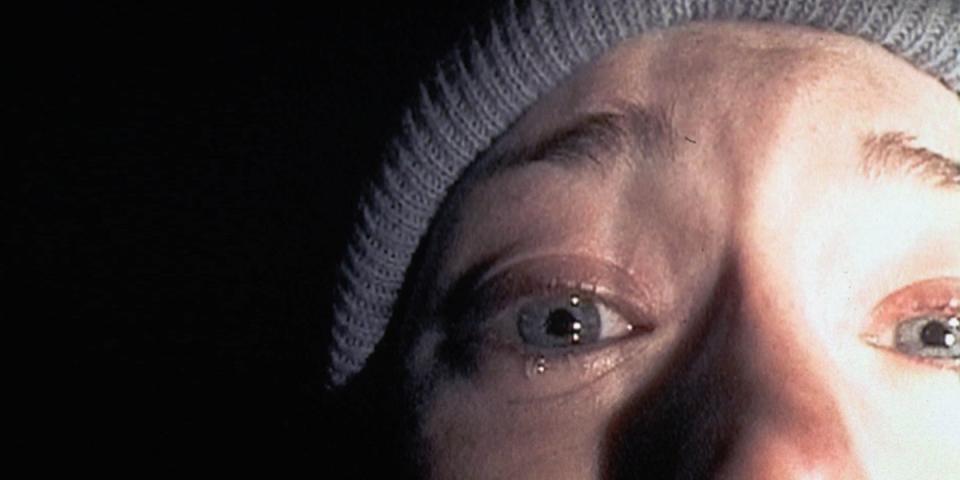How 'The Blair Witch Project' got audiences to wonder, 'Is this real?'
This week, 1999’s seminal found-footage horror film The Blair Witch Project turns 20. To celebrate the milestone anniversary, we look back at the movie’s legendary viral-marketing campaign that sold The Blair Witch Project as the frightening filmed evidence left behind from a real-life supernatural encounter in the Maryland forest.
This conceit helped turn directors Daniel Myrick and Eduardo Sánchez’s indie flick into a phenomenon. It’s hard to overstate how effective and inventive that promotional push was, turning a tiny project (with a reported $60,000 budget) into a $248.6 million-grossing juggernaut that, to this day, boasts one of the highest return-on-investment rates in cinema history.

In 1999, a year after the movie’s Sundance Film Festival premiere, Artisan purchased the film for approximately $1 million and, with the aid of Myrick and Sánchez, promptly set about using the then-fledgling internet for a totally of-the-moment marketing campaign. Their strategy relied on oblique teases that revealed little about the film’s plot, all while providing copious tidbits about a “legend of the Blair Witch” in the Maryland woods (the film was shot in the state’s Seneca Creek State Park). The trick, as it were, was to make audiences think the film’s material — presented as recently discovered video footage shot by three fledgling filmmakers on the hunt for the “Blair Witch” — actually happened. And it’s a trick that worked to an astounding degree.
The studio set up a website, www.blairwitch.com, that provided articles and news-report videos about the “missing campers” and other Blair Witch-related incidents. The site’s purpose was to legitimize the film’s story through “genuine” supporting media evidence, as well as to make intrepid web surfers who were scouring the internet for clues feel like they were discovering a true story that simply hadn’t yet received national attention. It gave moviegoers the sense that, far from passive viewers, they were amateur sleuths — even as the site capitalized on the fact that at that time, its phony stories couldn’t be fact-checked/debunked through a simple Google search, nor could fans at the time yet compare notes or share information via Facebook or Twitter.
Shrewdly, Artisan and the filmmakers kept this campaign low-profile, pushing it on the era’s online message boards and listing the actors on IMDb.com as missing real-life people. They eschewed a traditional trailer, instead debuting a few teases on college campuses (watch them above) and a faux-non-fiction TV special, Curse of the Blair Witch (watch it below), on the Sci-Fi Channel. The result was that, when the movie premiered in theaters, some chunk of the audience went in thinking that the film was an actual documentary culled from the characters’ discovered tapes, and that the legend of the Blair Witch was legit. Most important, even those skeptics who weren’t hoodwinked by the film’s verité pose were presented with something sensational — an expertly executed and entertaining “Is it real or not?” stunt with some novel scares that acquired excellent buzz.
The Blair Witch Project was hardly the first horror film to try to pass off its action as “real.” Twenty-five years earlier, The Texas Chainsaw Massacre opened with narrated text claiming that its Ed Gein-inspired events had actually taken place. And in the ensuing decades, countless scary movies (from Paranormal Activity to The Fourth Kind to The Conjuring) similarly strove to enhance their scares by pushing the idea “it’s not just a movie.” Still, even if a few other films had previously employed its “Is-it-real?” gimmick, The Blair Witch Project was the first mainstream effort to fully embrace a fake-documentary style with a full internet campaign as backup. And with its footage largely hidden from previews, online-fostered rumors and innuendoes were able to be the primary driver behind its “This really happened!” hype.
In today’s online movie culture, The Blair Witch Project’s promos would have been pored over, dissected and debated ad nauseam — and its illegitimate claims almost certainly exposed — long before it reached multiplexes. Myrick and Sánchez’s film seized on the possibilities presented by a population just getting to know the internet, a time before ubiquitous spoilers zip around social media at every step of a movie’s production. It was a trick relying on secrecy that, by changes in the culture alone, can never again be duplicated in quite the same way.
It’s no shock that, for the sequel, Lionsgate turned the idea of movie secrecy on its head. They called back to the original by peppering the internet with misleading clippings and sites — including a local Fox news story, a Kickstarter page, and Tumblr and WordPress blogs. Yet the studio’s big coup was to conceal the sequel’s very existence, to the point that it even released an initial trailer in which it claimed the film was an original effort titled The Woods. It wasn’t until seven weeks before its release, at San Diego Comic-Con, that it was properly unveiled as Blair Witch — a bombshell that blindsided even those who rabidly cover the horror-movie beat.
The apparent lesson to be learned, then, from Blair Witch? That in today’s climate, the way to truly generate anticipation and excitement isn’t via a calculated slow-build campaign; it’s by managing to maintain total secrecy from a know-it-all fan culture, and perhaps reminding them what it feels like to get a genuine surprise at the movies.
Read more on Yahoo Entertainment:
Want daily pop culture news delivered to your inbox? Sign up here for Yahoo Entertainment & Lifestyle's newsletter.


